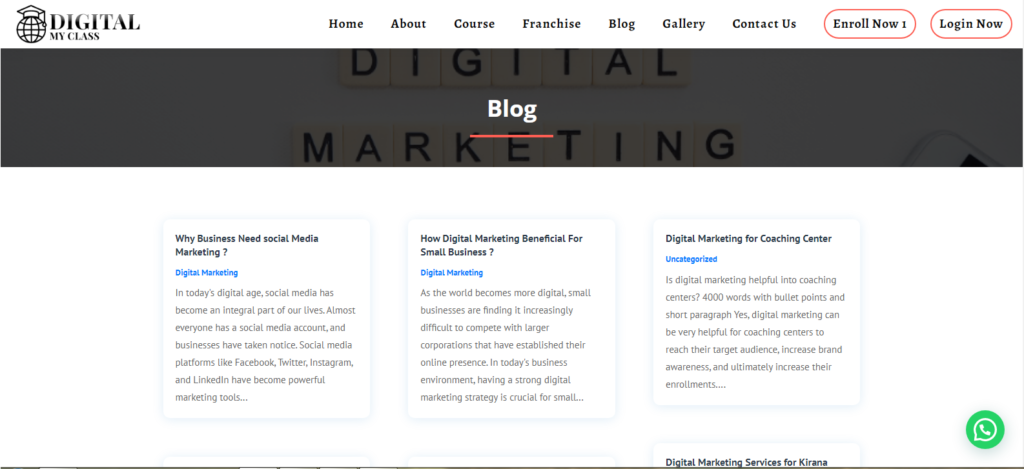In today’s digital age, having a website is essential for any business. Not only does it provide a platform for customers to find you online, but it also serves as a tool for marketing, sales, and customer engagement. However, having a website alone is not enough to grow your business. To make the most of your online presence, you need to leverage your website to drive traffic, build your brand, and generate leads. One way to do this is by creating and maintaining a blog on your website. In this article, we will explore how to grow your business from your website by using a blog.
1. Define Your Blogging Strategy

Before you start creating content for your blog, you need to define your blogging strategy. This involves setting goals and objectives, identifying your target audience, and developing a content plan. Some questions to ask yourself when defining your strategy include:
What are the goals of my blog? (e.g., drive traffic, generate leads, establish thought leadership)
Who is my target audience? (e.g., existing customers, prospective customers, industry influencers)
What topics should I write about? (e.g., industry news, product updates, thought leadership pieces)
How often should I publish new content? (e.g., weekly, bi-weekly, monthly)
By answering these questions, you can create a clear roadmap for your blog that aligns with your business goals and audience needs.
2. Create High-Quality Content

Once you have defined your blogging strategy, it’s time to start creating content. The key to a successful blog is high-quality content that resonates with your audience. This means creating content that is:
Relevant: Your content should be relevant to your audience’s interests and needs. This could include industry news, product updates, thought leadership pieces, and how-to guides.
Valuable: Your content should provide value to your audience. This could include tips, insights, or solutions to common problems.
Engaging: Your content should be engaging and easy to read. This could include using visuals, storytelling, or interactive elements.
When creating content, make sure to also optimize it for search engines by including relevant keywords in your headlines and body copy. This will help your content rank higher in search results, driving more traffic to your website.
3. Promote Your Blog

Creating great content is just one part of the equation. To get the most out of your blog, you need to promote it to your audience. This includes sharing your content on social media, email marketing, and other marketing channels. Some tips for promoting your blog include:
Share your blog posts on social media: Share your blog posts on your social media channels, including Facebook, Twitter, LinkedIn, and Instagram. Make sure to also use relevant hashtags to help your content get discovered by new audiences.
Include a link to your blog in your email signature: Add a link to your blog in your email signature to promote it to your contacts.
Run paid social media ads: Consider running paid social media ads to promote your blog to a wider audience.
Collaborate with other bloggers: Collaborate with other bloggers in your industry to cross-promote each other’s content.
By promoting your blog to your audience, you can drive more traffic to your website, increasing your brand awareness and generating more leads.
4. Engage with Your Audience

Your blog is not just a platform for you to share your content, but also a tool for engaging with your audience. Make sure to respond to comments on your blog posts, as well as on social media. This will help you build a community around your brand, and establish yourself as a thought leader in your industry. Some tips for engaging with your audience include:
Respond to comments: Make sure to respond to comments
Top of Form
